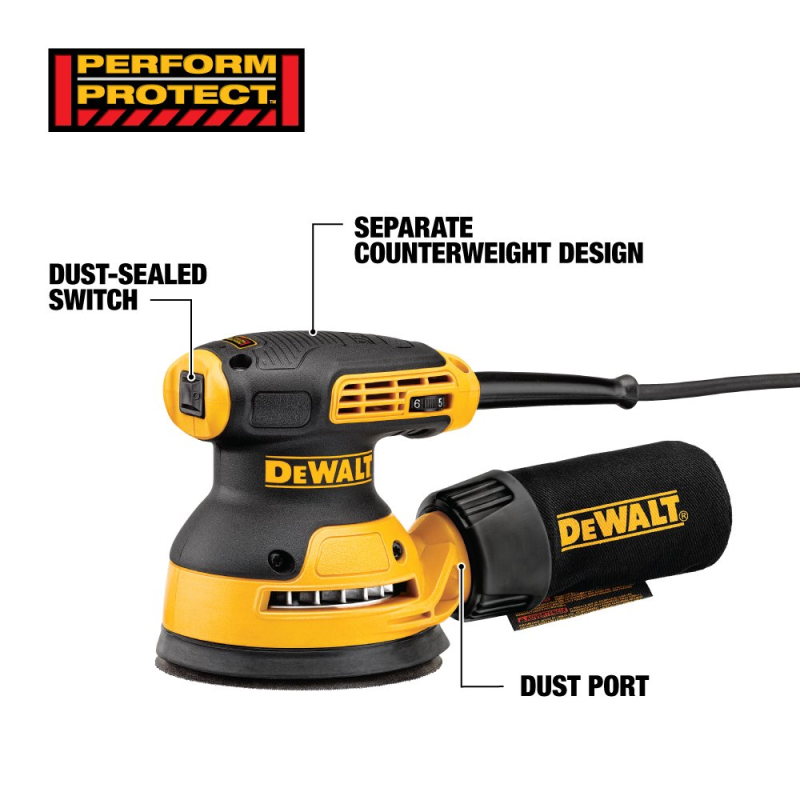Orbit Sander
Tool
•
Studio

Important Links
- 3.0 Amp motor spins the pad at 8,000 - 12,000 OPM
- Shorter height minimizes the distance between user and work piece
- Design reduces vibration and the rubber over-mold in critical areas reduces user fatigue
- Dust-sealed switch for dust protection for longer switch life
- Dust bag has one-hand locking system
Hazards
Flying Debris Forces
Flying chips and airborne dust
Sharp Objects
Contact with blade
Eye Injury
From flying debris
Noise
Sanding operation produces substantial noise.
Things to Avoid
- Do not use faulty equipment. Immediately report suspect equipment.
- Never operate the tool with one hand while holding the workpiece with the other hand.
- Always clamp the material and guide the tool with both hands.
- Do not use a power tool while you are tired or under the influence of drugs, alcohol or medication.
- Do not sand branches, dowel, or wood with embedded nails or screws.
- Do not sand ferrous material.
Safety Checks
- Locate and ensure you are familiar with all machine operations and controls.
- Check for damaged parts. Do not use the tool if the switch does not turn it on and off.
- Ensure the work area is clean and uncluttered. Keep table and work area clear of all tools, off-cut timber and sawdust.
- Start the dust extraction unit before using the machine.
- Hold power tool by insulated gripping surfaces, because the sander may contact its own cord.
- Secure the workpiece with clamps and against the guard fences and support the workpiece on a stable platform.
Operational Checks
- Practice trigger safety by removing finger from trigger until ready to sand.
- Never sand lead-based paint
- Do not operate without dust collection bag
Cleanup
- Turn the tool off, then disconnect plug from the power supply before making adjustments or cleaning the tool.
- Remove debris from area using the shop-vac.
- Wash exposed skin with soap and water after sanding.


 Safety Operating Procedure
Safety Operating Procedure